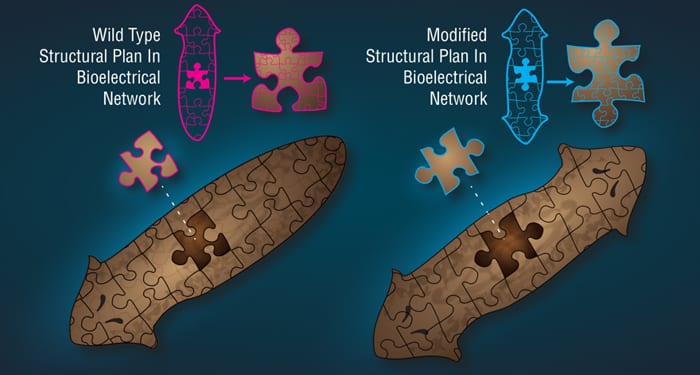It is widely accepted that the evolutionary process allows information to be passed down across generations, and that hereditary information is modified in a way that allows the appearance of increasingly complex creatures. But what is the material medium in which this information is stored and processed? The current paradigm holds that the genome (structure of DNA in cells) is the sole repository of long-term heredity. However, fundamental questions remain open despite the incredible advances in genomic sequencing and molecular biology. What is the relationship between the DNA in a fertilized egg and the complex anatomy of the creature (whether starfish, elephant, or tree)? It is well known that DNA does not encode 3-dimensional shape – DNA provides the parts list of which bodies are made, making it essential to understand the origin of complex form. How is it possible that planarian flatworms, which reproduce by fission and thus accumulate somatic mutations, all have the same, perfect patterning fidelity despite messy and diverse individual genomes that have been bombarded with changes for hundreds of millions of years? How do single-celled organisms control patterning, physiology, and behavior, using the same set of pathways to adapt to their environment? How is that plasticity deployed in multicellular animals, enabling individual cells to give up their autonomy and be harnessed to specific anatomical configurations?
In a review article in WIREs Systems Biology and Medicine, the authors propose that additional physical media, including the molecular filamentous (cytoskeletal) structures inside cells and the membranes surrounding those cells, form a contiguous structure linking ancestral forms to today’s organisms. These structures form a long-term memory underlying computation across the tree of life. In this review, they discuss the major open questions at the intersection of evolution, developmental biology, and biophysics. They focus on bioelectric communication among cells as one of the key mechanisms underlying the remarkable plasticity that allows organisms to edit their own growth and form. These profound questions have direct relevance spanning the fields of evolutionary biology, origin of life, developmental biology, epigenetics, and the control of structure and function in regenerative biomedicine and synthetic bioengineering.
Kindly contributed by the Authors.

















